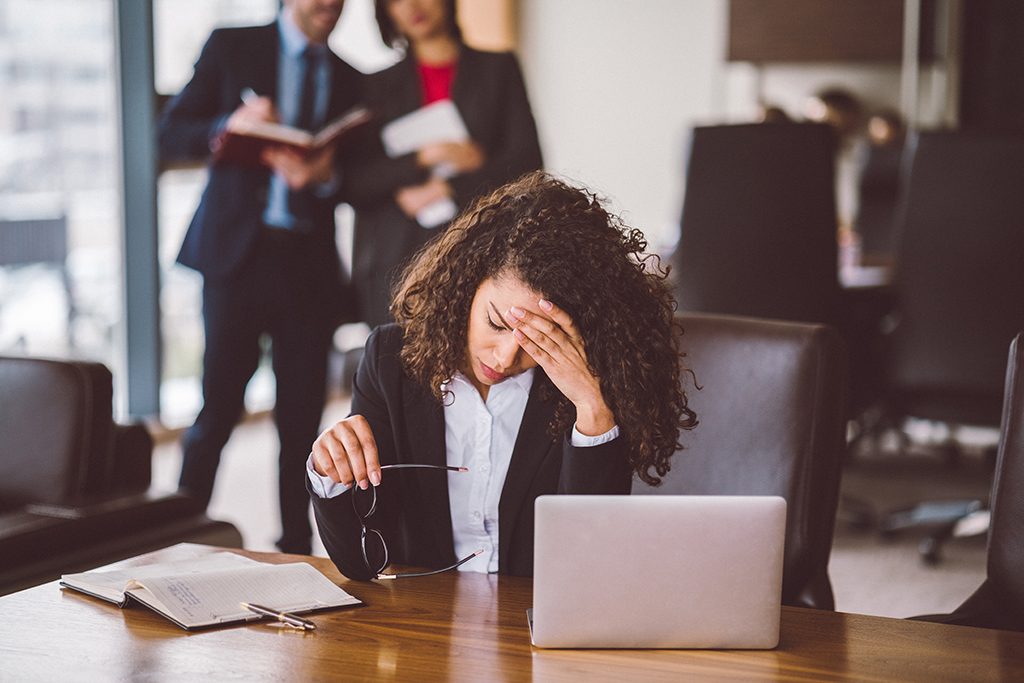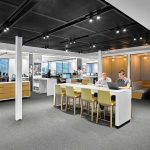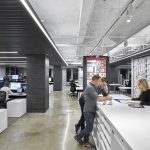How Poor Office Space Lighting Hurts Productivity
 Americans, on average, spend approximately 90 percent of their time indoors, according to the U.S. Environmental Protection Agency. A good portion of that time is at work—and reportedly in discomfort.
Americans, on average, spend approximately 90 percent of their time indoors, according to the U.S. Environmental Protection Agency. A good portion of that time is at work—and reportedly in discomfort.
A study by the American Society of Interior Design says 68 percent of employees complain about the lighting situation in their office. The Mayo Clinic lists glare and bright light as the leading cause of eyestrain.
And the National Headache Foundation lists fluorescent lighting as a primary trigger for migraine headaches.
Neck and back pain are other common problems resulting from too harsh or too dim artificial light. In fact, the Journal of the American Medical Association reports that Americans spend $87.6 billion annually treating these ailments.
Poor office lighting also contributes to inadequate sleep, drowsiness, fatigue, stress, anxiety and even seasonal affective disorder, which impacts 5 to 10 percent of the population.
Not to mention, it significantly affects your staff’s mood, happiness, concentration and other cognitive functions like disengagement, hurting the company’s bottom line.
A recent Gallup poll revealed that about 85 percent of employees worldwide are not engaged or are actively disengaged at work, for a variety of reasons. Researchers estimate this has led to nearly $7 trillion in lost productivity.
If employees aren’t working comfortably, they’re not working smart. And if they’re not working smart, they’re not working to their full potential.
Companies that better understand what improves productivity can maximize their talent. As a result, they produce better products, offer superior service and generate higher revenue.
And using light can help to optimize the functionality of office spaces and create an atmosphere that enhances employee health, happiness and comfort and productivity.
The value of improved productivity
Moving the productivity needle even a wee bit can deliver larger gains than other common cost savings, such as reducing energy, operational or leasing expenses.
Commercial real estate firm JLL developed a famous formula to quantify the value of productivity improvements. It’s called the 3/30/300 rule.
Actual figures vary depending on various factors including location, but in general, organizational expenses (per square foot, per year) break down like this:
- $3 for utilities
- $30 for rent/mortgage
- $300 for payroll
Knowing that, consider this: The U.S. Energy Information Administration says the average commercial building is a little over 15,000 square feet.
Using the 3/30/300 proportions, annual spending for a business in an average building should break down to approximately $45,000 on utilities, $450,000 on rent and $4.5 million on employees.
Using this formula:
- Reducing utility costs by 50 percent saves this company $22,500 annually
- Improving space utilization by 10 percent saves $45,000
- Increasing employee productivity by 5 percent saves $225,000
The savings are self-evident. This formula illustrates how even a small change in the employee category can have a vast impact on a company’s bottom line
It also shows why everything in the office environment should contribute towards the goal of worker productivity, lighting included.
Better lighting a top in-demand work asset
Many factors determine whether productivity is high or low in an office space. These factors range from company culture to physical aspects of the office design.
Lighting is one of them, and a big one at that.
Consider a recent survey by HR advisory firm Future Workplace. A survey of more than 1,600 North American employees revealed that access to more natural light was the No. 1 office perk, outranking stalwarts like onsite cafeterias and premium perks such as onsite childcare and fitness centers.
The study also found that the absence on natural-quality light hurts employee experience. More than one-third of employees feel that they do not get enough natural light in their workspace, and 47 percent say they feel tired or very tired because of that lack of natural light.
What’s more, 43 percent report feeling gloomy because of a lack of light.
That’s not the only study that reinforces the connection between natural light and employee well-being.
A recent study by Alan Hedge, a professor in the Department of Design and Environmental Analysis at Cornell University, found that workers in daylit office environments experienced an 84 percent drop in the symptoms of eyestrain, headaches and lured vision symptoms, all of which can hinder productivity.
Want to learn more?
To learn more about how an office space’s lighting design can alter its workforce’s productivity, read “Four Examples of How Tunable Lighting Improved Workspace Productivity.”

